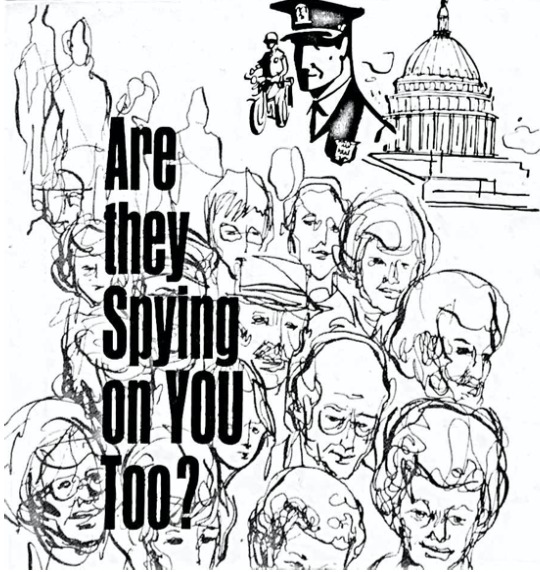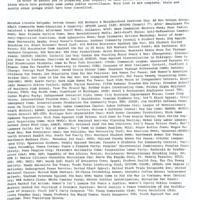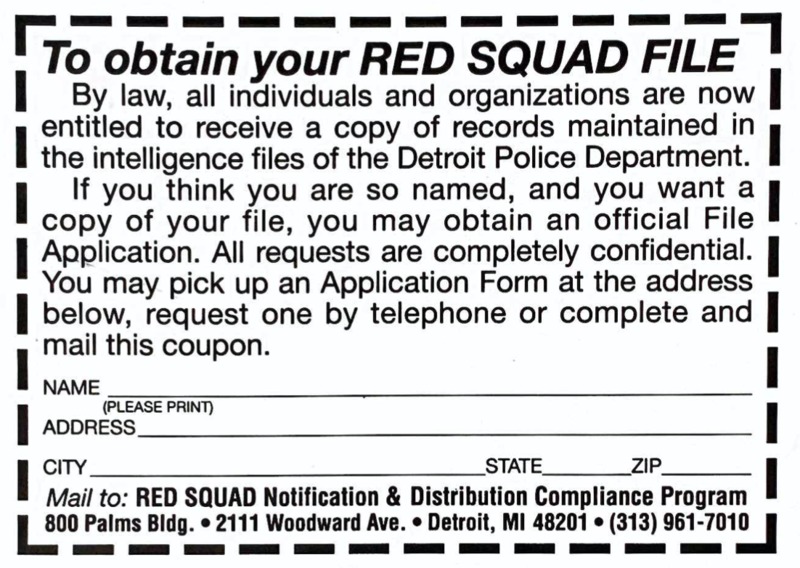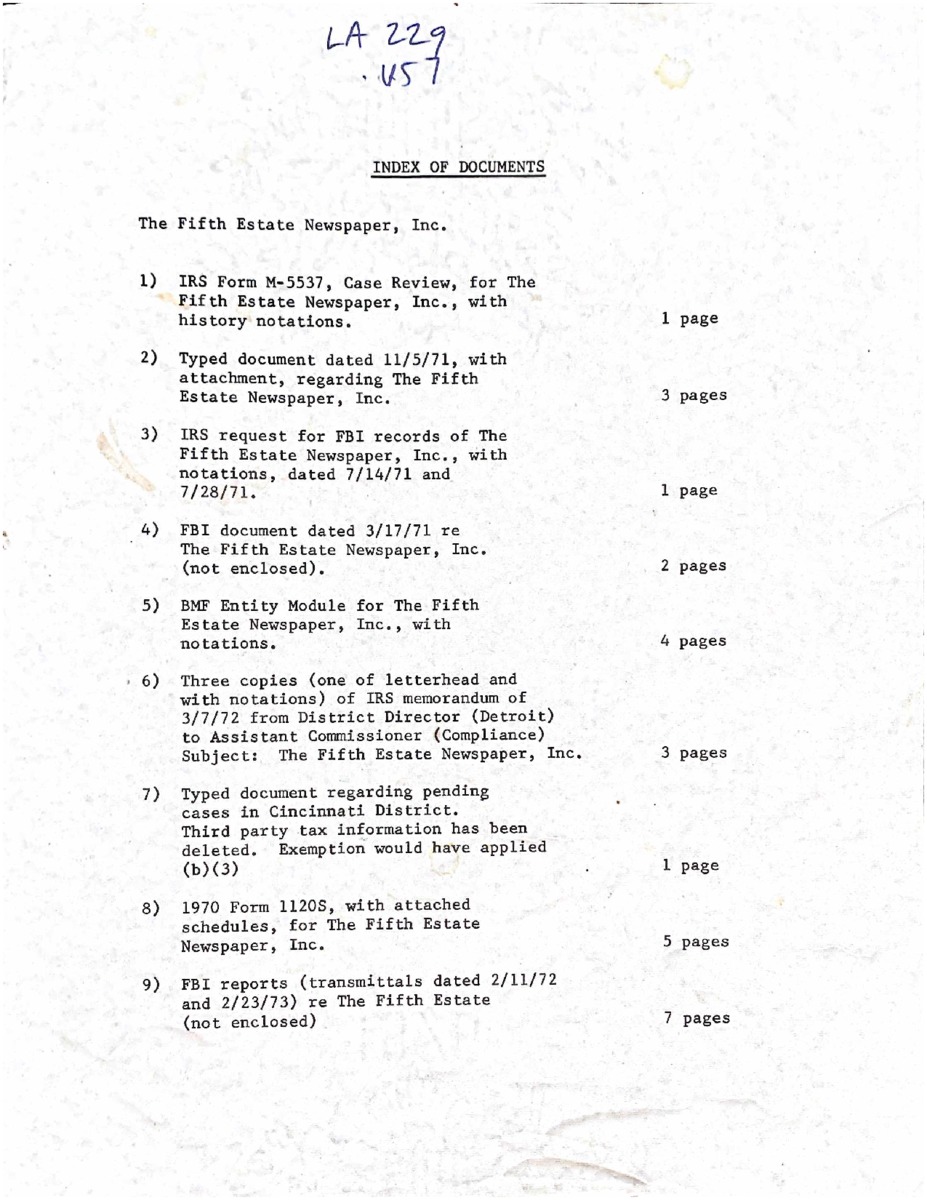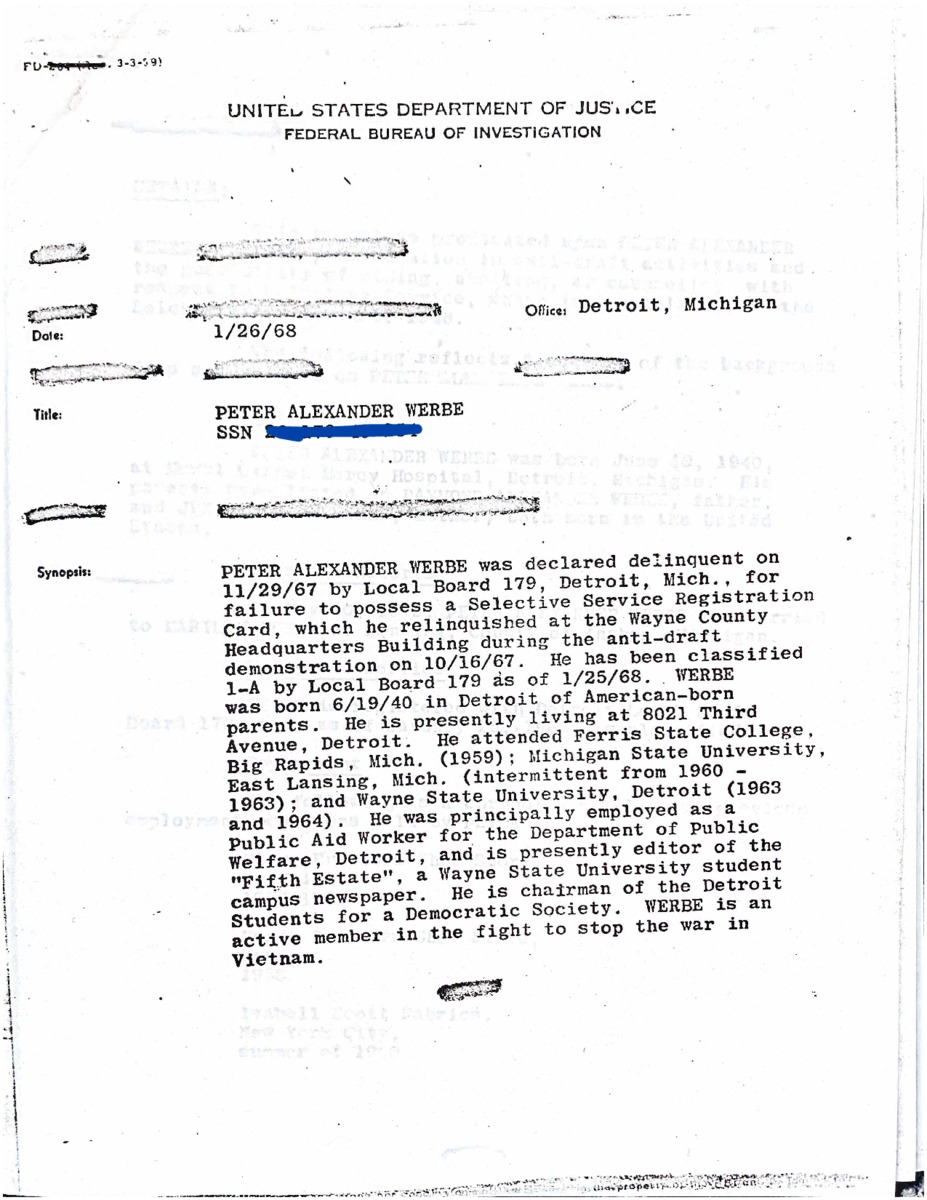Red Squads
Introduction
Add on from team II’s red squad page from last year
With origins in McCarthyism, both the Detroit Police Subversive Activities Investigation Department (SAID) & the Reconnaissance Unit, Organized Crime Section, colloquially known as the Red Squad, surveilled the activities of approximately 1.5 million people and organizations that lived or visited the city of Detroit beginning in 1931.
Shift from McCarthyism to targeting New Left & Civil Rights organizations
- Surveillance much closer to national intelligence - particularly Army and FBI
- Police cohorts widened to include more state police and college units in Detroit (Wayne State)
- Major advancements in technology
- Major increase in photographic surveillance
- After 1967, upwards of 60 DPD officers received extensive training in photographic equipment
- Officers would attend rallies and demonstrations in unmarked cars and in plainclothes and take video footage of attendees
- Ultimately accumulated scrapbooks swollen with images and information
- Surveillance of Black police officers
- Mostly of those who were sympathetic to civil rights
- DPOA would attend gatherings disguised as observers
- “Planted informers and sworn personnel conducted both open and covert surveillance in partnership, a unique team play epitomizing shared concern for curbing dissent,” (Donner)
Walter Benkert v. Michigan State Police
- Walter Benkert, president of Michigan Association for Consumer Protection
- Published an article critical of X
- Alledged that he had been “continually intimidated, his house broken into, the filed of the Michigan Association for Consumer Protection ransacked, his documents stolen, his phone tapped, his movements continuously surveilled by helicopters manned by pilots equipped with binoculars, and that efforts had been made by unidentified individuals to run him off the road,” (Donner).
- Within a year, Benkert case became class-action suit with fourteen plaintiffs
- Defendant list included Police COmmission of the city of Detroit, the police chief, and Mayor Young
- The state police ultimately admitted to the illegal surveillance
- The plaintiffs had accumulated evidence that the city police, between the 1930s to the 1970s, “gathered and disseminated intelligence concerning the political activities of between 60,000 and 110,000 individuals and organizations, and that 38,000 subjects had been targeted by the state police,” (Donner)
- Case determined that the Subversive Activities Investigation Department, or Red Squad, acted for years without oversight or restraint.
1976 Court Order to Distribute Files
Judge James Montante ruled the city and state surveillance unconsitutitonal and ordered victims to be notified and authorized to see file if requested.
What was inside the files?
Examples from inside Peter Werbe and The Fifth Estate's files. Peter Werbe is an activist and former editor of the radical newspaper The Fifth Estate.
Does it end in 1974?
No
Sources:
Donner, F. (1992). Protectors of privilege: Red squads and police repression in urban America. Univ of California Press.
"This examination [Benkert Lawsuit] reveals that in addition to keeping files on what is traditionally perceived as 'political people,' the police have kept files and cards on a number of other people and organizations such as: consumer groups, environmental groups, womens groups, gays, welfare rights, busing (pro and con), unemployed, bicentennial, workers unions, black groups (including very traditional civil rights groups), ethnic groups and student groups, just to name a few. The problem therefore is that while many people may know of this act, the majority will not know they are victims." --George Corsetti, representing victims of surveillance

